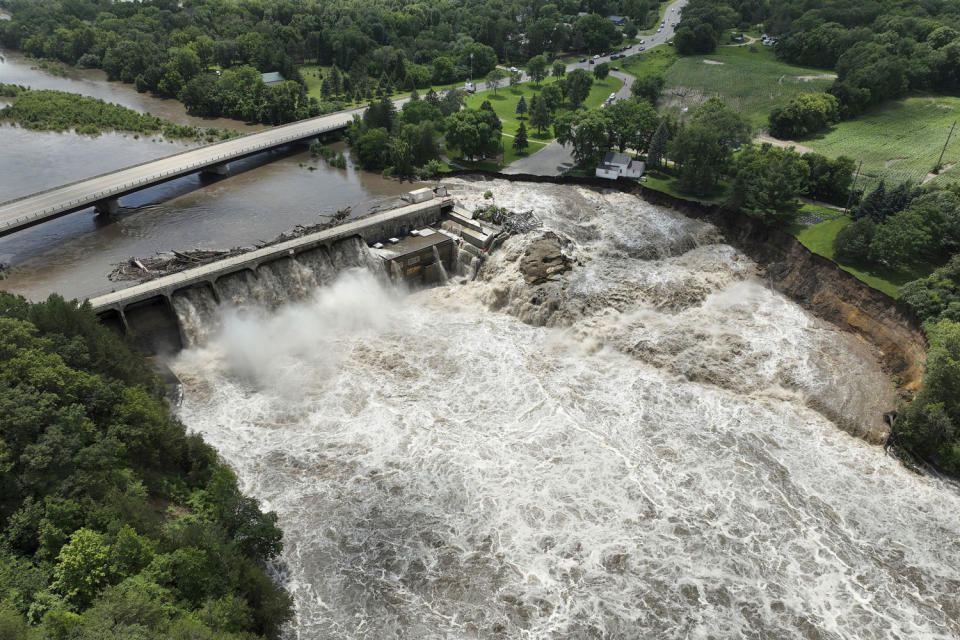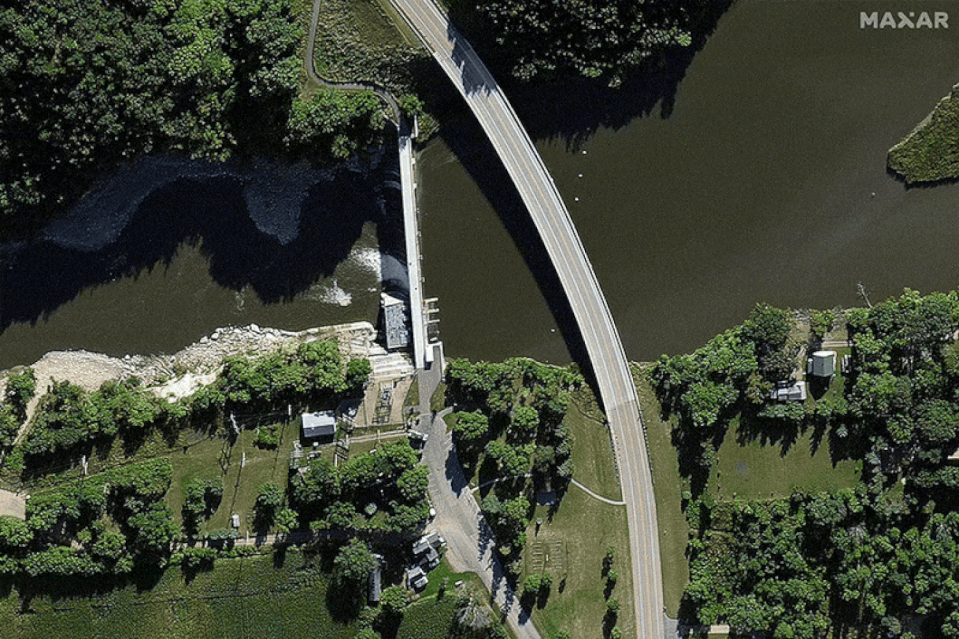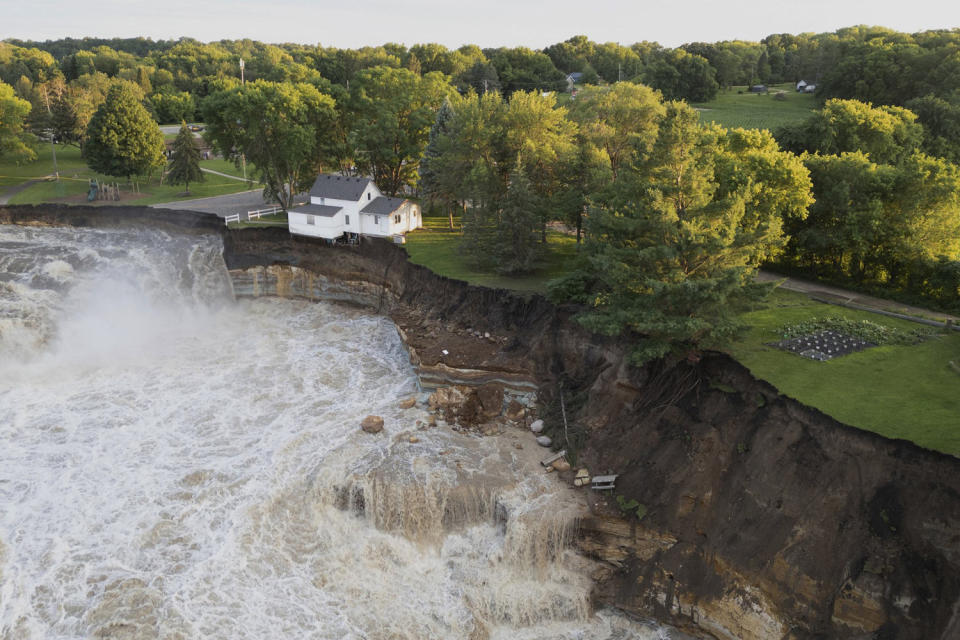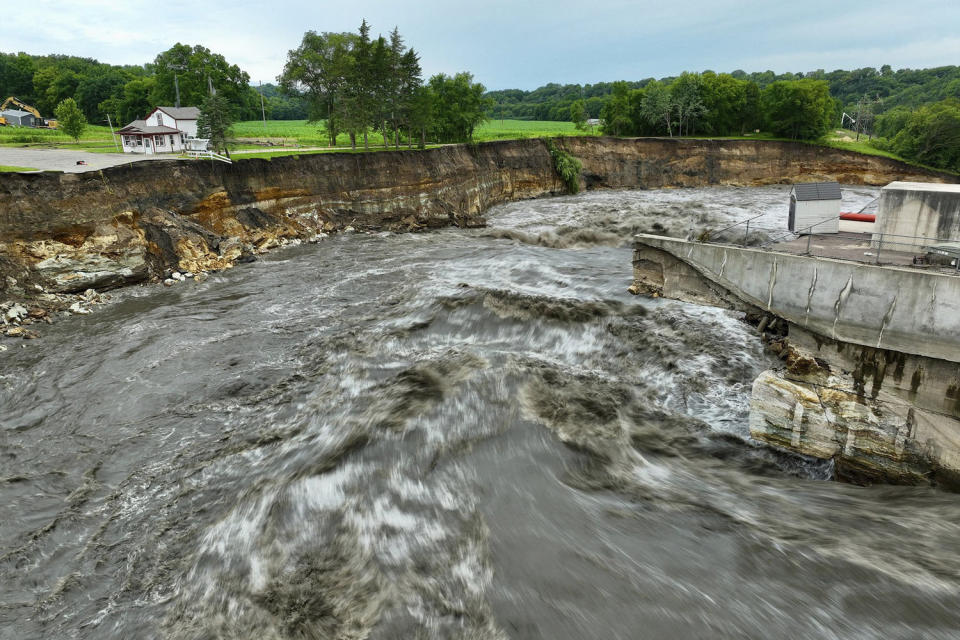The partial failure of the 114-year-old Rapidan Dam in Minnesota underscores the risks many communities face as the number of dams in disrepair increases and climate change makes rainfall more frequent and intense.
Before the breach, which caused floodwaters to cut away the bank of the Minnesota River and swallow up a waterfront home, local leaders in Blue Earth County, Minnesota, had been weighing whether to demolish the old structure or make expensive long-term repairs. Regulators deemed the dam a “significant” hazard and it was classified as in “poor” condition in April 2023, according to the National Inventory of Dams.
Nearly 4,100 dams are categorized as having the same level of risk and condition — or worse — according to an NBC News analysis of inventory data. Every state has at least one such dam. Ohio has the most with 373.
Overall, America’s dams – more than 91,000 in total – are aging. Many require expensive rehabilitation. Few are designed for today’s climate, with a warmer atmosphere that can hold and remove more water. The number of people living in the flood zones below these dams continues to grow.

The average American dam is 57 years old. Dam safety experts say the pace of investment is too slow to maintain infrastructure at the level it was built to support, let alone address rising climate risks.
“It’s lagging behind,” said Sharon Tapia, president of the Association of State Dam Safety Officials. “We are in a situation where we are seeing more and more dams that need to be renovated or repaired to meet current standards.”
The association estimated in a report last year that it would cost $157.5 billion to bring non-federal U.S. dams up to standard. That only addresses current safety standards — it doesn’t take into account improvements to address additional, future risks from climate change, she said.
President Joe Biden’s 2021 infrastructure bill included $3 billion for dam safety projects — a sliver of the total need.
It’s too early for scientists to say whether global warming played a role in the Rapidan Dam’s partial failure, but it has made the conditions that led to it more likely.
For every degree Fahrenheit of warming, the atmosphere can retain and release about 3% to 4% more moisture, making storms pack a stronger punch and making rainfall that was once considered rare much more common. That in turn increases the risk of devastating floods.


The Rapidan Dam, built in 1910 and operated by Blue Earth County, was described on the county’s website as being in a “state of disrepair.” After floods in 2019 and 2020, a power company stopped leasing the dam, leaving it without a hydroelectric plant operator.
But the Federal Energy Regulatory Commission, which regulates the dam, wasn’t overly concerned about the integrity of the structure last month. According to FERC documents, the dam was inspected on May 21 and “found to be in generally satisfactory condition.”
“No major safety deficiencies have been identified at the dam that require immediate remedial action,” the letter said, although it did report severe concrete deterioration, exposed rebar and cracks, which required close monitoring.
The inspection, an analysis of the safety and stability of the structure, was separate from the National Inventory of Dams assessment, which looks at the project’s overall performance, a FERC spokesman said.
Blue Earth County officials had debated whether to remove the dam, at a cost of more than $82 million, or repair it at a cost of about $15 million. Both options had drawbacks: Repairs could take as little as 40 years, while removal could take five years to plan and secure permits, according to 2021 technical documents. A county spokesperson said officials could not respond to questions, apart from giving updates at press conferences. .


According to Brennan Dettmann, a meteorologist with the National Weather Service in the Twin Cities, the partial collapse of the dam was the result of three days of heavy rains that caused the Minnesota River to reach its third-highest flood stage since at least 1881.
In the Mankato area, where the dam is located, 3 to 8 inches of rain fell in three days, based on an analysis by Kenny Blumenfeld, a senior climatologist with the Minnesota State Climate Office.
“That bend of the Minnesota River has been hit pretty hard,” he said, adding that in southern Minnesota the chance of such heavy rainfall each year is between 0.5% and 2%.
Bill McCormick, who led Colorado’s dam safety program from 2011 to 2021, said extreme rainfall has increased pressure across the state.
“We are increasingly experiencing violent storms that put the aging infrastructure to the test. Spillways and dams that may not have seen as many storms in a given year are now seeing more storms,” he said. “All these aging systems are now being tested more and more often.”
The housing development also increases risk levels for some dams, McCormick added, as people settle in once-rural areas, where dams built for farmland now guard subdivisions.
Hiba Baroud, assistant professor of civil and environmental engineering at Vanderbilt University, said the Rapidan’s partial failure, among other problems, should prompt lawmakers to take a critical look at how the dam’s infrastructure and repairs can be improved.
“We really need to be proactively thinking about possible scenarios for all the dams in the U.S. and start prioritizing which dams need to be rehabilitated or upgraded to prevent a situation like this from happening,” she said, “rather than witnessing a major event and using it as a wake-up call about this particular dam.”


According to data from the Association of State Dam Safety Officials and analyzed by NBC News, 283 dams in the U.S. experienced some sort of failure between 2013 and 2023. Some caused no significant problems, but others had serious consequences. In 2019, a snowstorm caused a dam to break, washing away a Nebraska man’s home and drowning him.
According to Tapia, dam renovation is too often hampered by insufficient funding and lengthy environmental permitting procedures.
“It just takes too long to fix them because of the funding issues and the permitting issues,” she said. “The engineering is usually the easy part.”
This article was originally published on NBCNews.com







